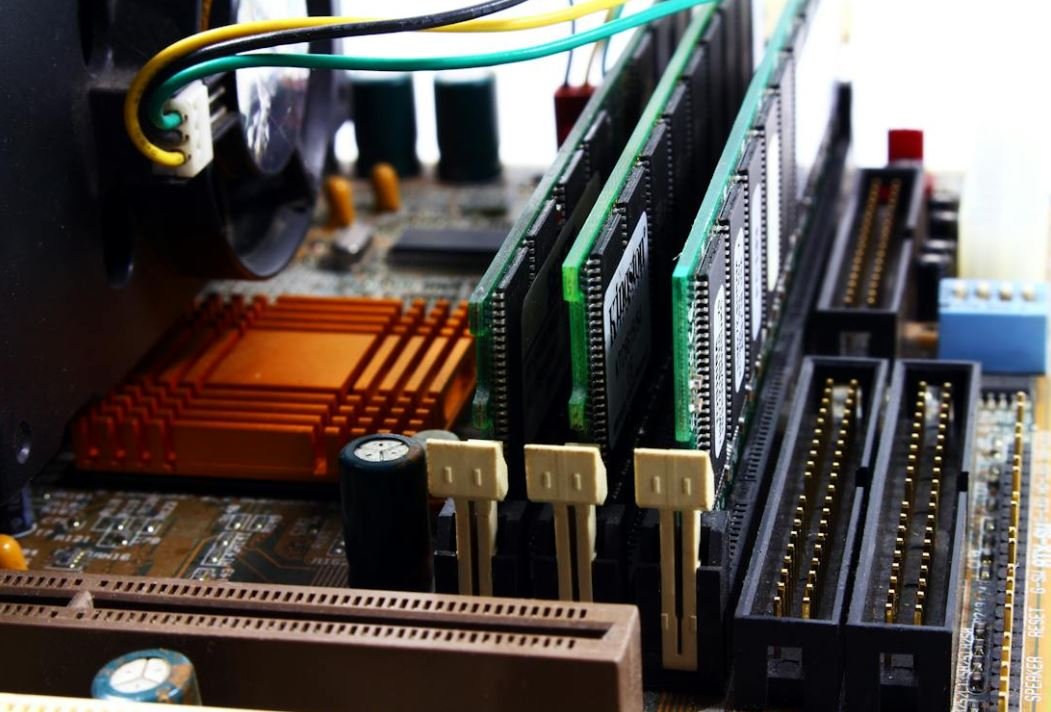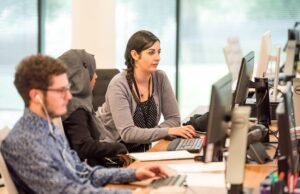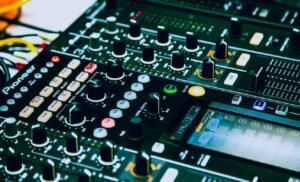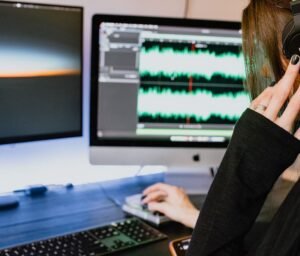Can AI Produce Art?
Artificial Intelligence (AI) has been making significant advancements in recent years, raising the question of whether machines can create art. Historically, art has been seen as a uniquely human endeavor, but with the emergence of AI technologies, this notion is being challenged.
Key Takeaways:
- AI technologies have the potential to produce art.
- Some argue that AI-produced art lacks emotional depth.
- AI-generated art can be seen as an extension of human creativity.
AI algorithms can analyze and interpret vast amounts of data, allowing machines to generate creative outputs in various forms, such as paintings, music, and even poetry. These algorithms are designed to learn patterns, mimic human behavior, and generate outputs that can be similar to the works of renowned artists.
*AI-generated art has the potential to revolutionize the art world, challenging our perceptions of creativity and human expertise.*
One of the key arguments against AI-produced art is that it lacks emotional depth. Critics argue that true art resonates with human emotions and experiences, and that is something AI systems cannot replicate. While AI can produce visually striking pieces, it often lacks the depth of meaning and personal expression found in traditional human-created art.
*However, AI artwork can still elicit emotional responses from viewers, blurring the lines between human and machine interaction.*
AI-generated art raises questions about the definition of creativity and the role of artists. Some argue that because AI systems are programmed by humans, the creative process should still be attributed to the programmers and not the machines themselves. They view AI-generated art as an extension of human creativity, where machines assist, augment, or enhance the artistic process.
*The integration of AI in the art world opens up new possibilities for artists, offering a collaborative and innovative approach to creation.*
The State of AI-Produced Art:
| Art Form | AI Applications |
|---|---|
| Painting | AI algorithms can analyze existing artworks and create unique paintings based on learned styles and techniques. |
| Music | AI can compose original music by analyzing vast musical datasets and generating harmonies, melodies, and arrangements. |
Current AI systems can produce impressive works of art, but there are still challenges to overcome. AI lacks the intuition and understanding of human emotions, which can limit its ability to create truly original and meaningful art. It often relies heavily on learned patterns and existing examples, leading to the potential bias and lack of true innovation.
- AI-generated art challenges traditional notions of authorship and creativity.
- The limitations of AI in understanding human emotions can restrict its ability to create meaningful art.
- The collaboration between artists and AI systems offers new possibilities for artistic expression.
*As AI continues to advance, we may witness further exploration and breakthroughs in the intersection of AI and art, pushing the boundaries of human creativity and challenging our perceptions of what constitutes art.*
The Future of AI-Produced Art:
| Art Form | AI Potential |
|---|---|
| Poetry | AI can generate poetry by analyzing vast amounts of textual data, capturing various writing styles and themes. |
| Sculpture | AI can create intricate sculptures by interpreting 3D modeling and translating virtual designs into physical objects. |
As AI continues to evolve, we can anticipate further advancements in AI-generated art. The development of more sophisticated algorithms, combined with improved understanding of human emotions, may eventually lead to AI systems creating art that not only mimics but also captures the essence of human creativity.
*The future integration of AI in the art world holds the promise of new art forms and transformative experiences for both artists and audiences.*
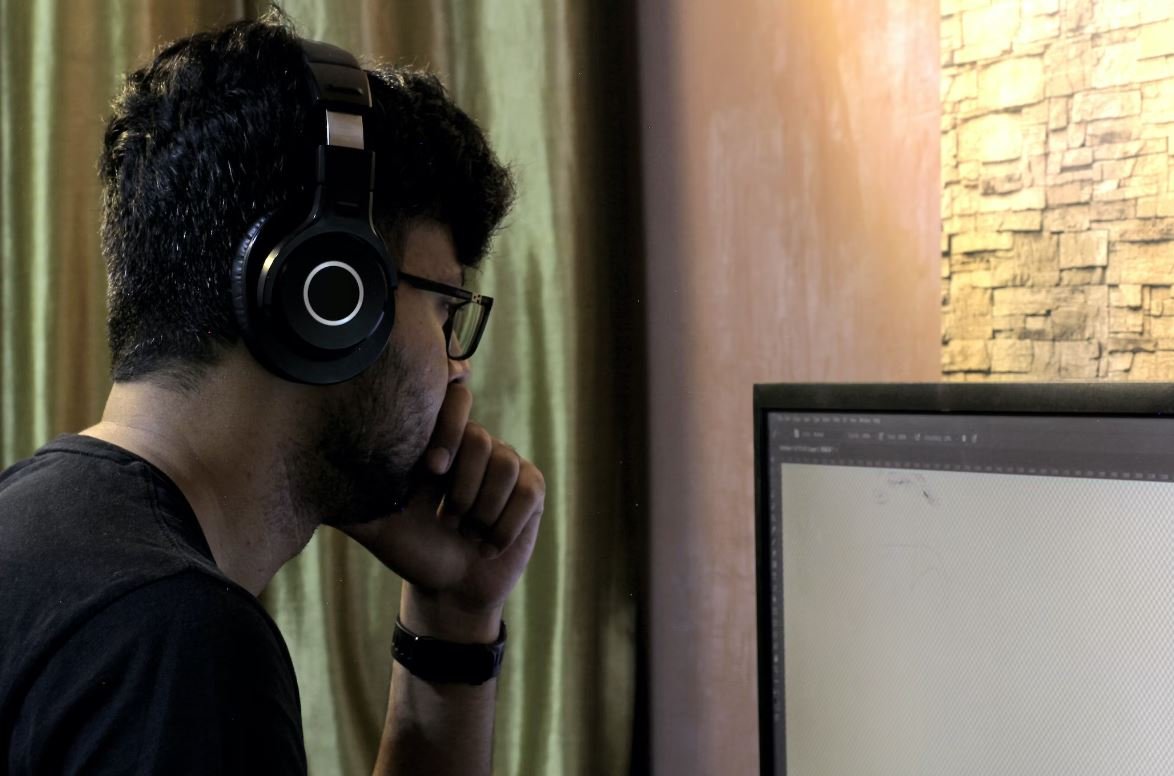
Common Misconceptions
Misconception 1: AI cannot create original and unique artworks
One common misconception about AI and art is that AI can only duplicate or replicate existing artworks, rather than create truly original and unique pieces. However, this notion is not entirely accurate. AI algorithms can be programmed to generate new and innovative art by analyzing patterns and styles from various sources.
- AI can learn from a wide range of art forms and create unique combinations
- AI can produce surprising and unexpected art compositions
- AI can experiment with different techniques and styles to create original artwork
Misconception 2: AI lacks emotion and creativity in its artwork
Another misconception is that AI-produced art lacks the emotion and creativity that human artists bring to their work. While it is true that AI lacks subjective experiences and emotions, it can still generate art that evokes emotional responses from viewers.
- AI can learn to mimic or simulate emotional expressions in its artwork
- AI-generated art can evoke a range of emotions in viewers
- AI algorithms can be programmed to incorporate elements of surprise and novelty in their creations, showcasing creativity
Misconception 3: AI art devalues human creativity
There is a prevalent misconception that AI-generated art devalues the role of human artists and their creative abilities. However, AI should be seen as a tool that complements rather than replaces human creativity.
- AI can collaborate with human artists to enhance their creative process
- AI-generated art can inspire and spark new ideas for human artists
- AI can automate repetitive tasks, allowing human artists to focus on more complex and innovative aspects of their work
Misconception 4: AI art lacks authenticity and the human touch
Some believe that AI art lacks the authenticity and personal touch that artists infuse into their work. While AI-generated art may not have the same intentionality or personal experiences behind it, it can still capture the essence of human touch.
- AI can emulate different artistic styles, including those associated with famous artists
- AI-generated art can replicate the brush strokes and techniques used by human artists
- AI can analyze vast amounts of existing art and adapt its creations to match the style and aesthetics of specific artists
Misconception 5: AI art is purely a technical achievement with no artistic value
There is a misconception that AI-generated art is solely a technical achievement and lacks artistic value. However, AI art has its own unique artistic qualities that should be appreciated and evaluated on their own merits.
- AI-generated art can push the boundaries of traditional art by introducing new techniques and aesthetics
- AI art can challenge traditional notions of authorship and creativity
- AI can enable new artistic collaborations and cross-disciplinary explorations
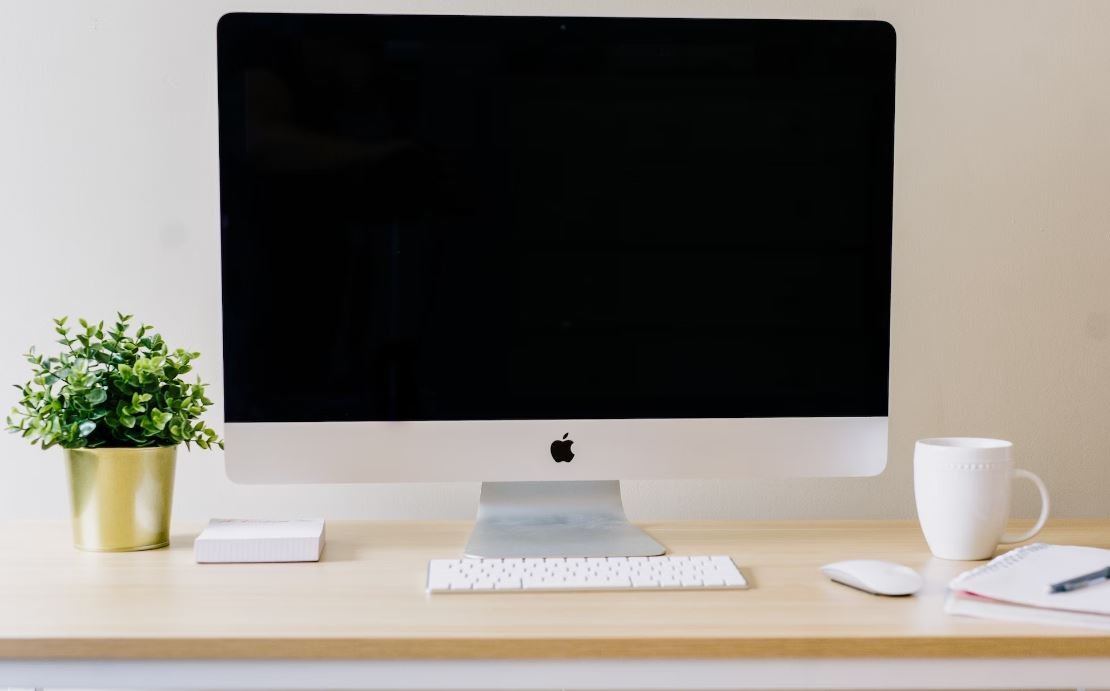
The History of AI in Art
Artificial intelligence has been making its mark in the art world, challenging long-standing beliefs about creativity and artistic expression. The following table showcases some key moments in the history of AI’s involvement in art:
| Year | Event |
|---|---|
| 1956 | First AI-generated music, created by the IBM 704 computer |
| 1973 | HAROLD COHEN’s AI program, AARON, creates its first original artistic drawings |
| 1997 | ALBERT RAYSACK develops the first AI-generated works exhibited in a gallery |
| 2011 | LEONARDO, an AI system developed by KOSOLAPOV & MALOFRYZOV, paints artwork inspired by Da Vinci |
| 2016 | GANs (Generative Adversarial Networks) gain prominence, allowing AI to create realistic and original images |
AI Artists: Human vs. Machines
The emergence of AI artists raises an intriguing question: can they compete with human artists on a level playing field? The following table compares human and AI artists in various aspects:
| Aspect | Human Artists | AI Artists |
|---|---|---|
| Creativity | Boundless imagination and interpretation | Capable of generating creative outputs based on learned patterns |
| Emotion | Ability to deeply convey emotions through art | Limited understanding of emotions, struggles with genuine expression |
| Learning | Enhances skills and techniques over time through practice | Constantly learning and adapting from vast data sets |
| Originality | Able to create unique and groundbreaking concepts | Dependent on existing data, has difficulty producing truly original works |
The Ethics of AI Art
As AI becomes more deeply integrated into the art world, ethical concerns arise. The table below highlights some ethical dilemmas associated with AI in art and the diverse perspectives surrounding them:
| Ethical Concern | Perspectives |
|---|---|
| Originality and Authenticity | AI-generated art challenges notions of what constitutes an original and authentic work |
| Artistic Autonomy | AI tools can be seen as tools for artists, augmenting their creativity |
| Job Displacement | AI’s impact on traditional artists may result in job loss, but also opens new opportunities |
| Ownership and Copyright | Issues arise regarding who owns the rights to AI-generated artwork |
AI Art in the Market
With AI-generated art gaining recognition and attracting buyers, the market for such creations continues to grow. The table below showcases some remarkable sales of AI-generated art:
| Artwork | Sale Price | Year |
|---|---|---|
| “Portrait of Edmond de Belamy” by GAN | $432,500 | 2018 |
| “The Chaos” by AICAN | $50,000 | 2020 |
| “Memories of Passersby I” by AICAN | $12,500 | 2021 |
| “Portrait of Edmond de Belamy” by GAN (Print) | $18,500 | 2019 |
AI Art Critics: The Rise of Automated Evaluators
The integration of AI in art criticism prompts a debate on the effectiveness and objectivity of automated evaluators. The table below provides examples of AI art critics:
| Name | AI Art Critic | Comments |
|---|---|---|
| CANUTO | An AI critic capable of assessing composition, emotions, and visual elements | “This artwork conveys a powerful sense of melancholy through its skillful harmony of color and form.” |
| VERITAS | An AI critic emphasizing technical precision and analyzing brushwork | “The artist demonstrates remarkable command over the medium, employing delicate brush strokes to create a captivating surface texture.” |
| SERAPHINA | An AI critic focusing on symbolism and interpreting deeper meanings | “The intricate use of recurring motifs alludes to the complexities of the human condition, inviting profound reflection.” |
The Future of AI and Art Collaboration
Artists increasingly collaborate with AI systems, forging entirely new creative processes. The following table explores notable collaborations:
| Artist | AI Partner | Description |
|---|---|---|
| RONALD EVANS | The Painting Fool | The AI system assists Evans in exploring new styles and techniques across various mediums |
| MARISSA PERRI | DADA | Perris integrates DADA’s AI tools to create hybrid art pieces combining digital and traditional elements |
| IAN CHENG | BOB | BOB is an AI simulation developed by Cheng, creating evolving, narrative-driven works |
AI Impact on Art Education
Art education has started to incorporate AI to inspire students, broaden their horizons, and explore new artistic possibilities. The table below showcases examples:
| Initiative | Description |
|---|---|
| AI-generated Art Exhibitions | Universities hold exhibitions featuring AI-generated art to introduce students to its potential |
| AI-Assisted Creative Labs | Workshops and labs provide students access to AI tools to enhance their artistic process |
| Data-Driven Visual Exploration | Students employ AI algorithms to analyze data sets and create visual representations |
AI and Conservation: Restoring Artworks
AI technology finds applications in restoring and preserving cultural artifacts, as seen in the following examples:
| Application | Description |
|---|---|
| Image Reconstruction | AI algorithms reconstruct damaged or missing parts of artworks using machine learning techniques |
| Colorization | AI restores faded or black and white images by adding color based on historical references |
| Text Restoration | Using AI, faded or illegible text in historical documents can be restored and made readable again |
A New Era of Artistic Possibilities
The rise of AI in art brings both excitement and concerns to the creative landscape. By enabling collaboration between humans and machines, AI opens up new artistic possibilities previously unimagined. As AI continues to evolve, artists, critics, and audiences alike must grapple with the shifting boundaries and definitions of art. This dynamic relationship challenges us to explore the intersections between technology and creativity, ultimately broadening our understanding of what it means to produce and appreciate art.
Frequently Asked Questions
Can AI create original artworks?
Yes, AI is capable of producing original artworks. Through the use of algorithms and deep learning techniques, AI systems can generate unique pieces of art.
How does AI create art?
AI creates art by analyzing patterns and styles from existing artworks and applying them to generate new pieces. It can mimic the techniques used by human artists or generate completely novel styles.
Is AI art considered to be authentic?
Authenticity in AI art is a subject of debate. While AI can create visually impressive pieces, some argue that since it is a machine-generated output, it lacks the emotional depth and intentionality of human-created art.
Can AI exhibit creativity in art?
AI systems can exhibit creativity in art by producing unique compositions, exploring novel styles, and generating unexpected outputs based on the data and algorithms they have been trained on.
What role do humans play in AI art creation?
Humans play a crucial role in AI art creation. They provide the initial dataset, design the algorithms, and curate the generated artworks. Collaborations between humans and AI are common in the field of AI-generated art.
How do artists and critics perceive AI art?
Perceptions of AI art among artists and critics vary. Some embrace it as a new tool for inspiration and exploration, while others express concerns about its impact on human creativity, originality, and the role of the artist.
What are the limitations of AI in art creation?
AI in art creation faces limitations such as the inability to experience emotions, lack of personal expression, and the challenge of fully understanding and replicating the creativity and intuition present in human art-making processes.
Can AI art be sold and owned?
Yes, AI-generated artworks can be sold and owned. The ownership rights and legal aspects related to AI art are evolving, and various approaches are being explored to establish the attribution and value of these artworks.
Can AI art surpass human-created art?
Whether AI art can surpass human-created art is subjective and debated. AI can create artworks that are visually compelling and novel, but the subjective and emotional aspects of human-created art continue to be significant for many.
What is the future of AI in art?
The future of AI in art offers immense possibilities. It can potentially revolutionize the way art is created, push the boundaries of creativity, and serve as a tool for artists to explore new artistic territories.

